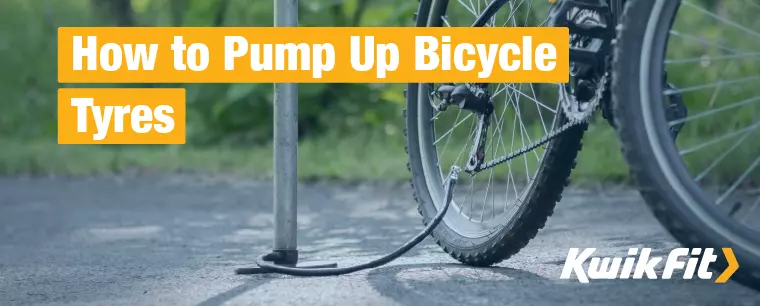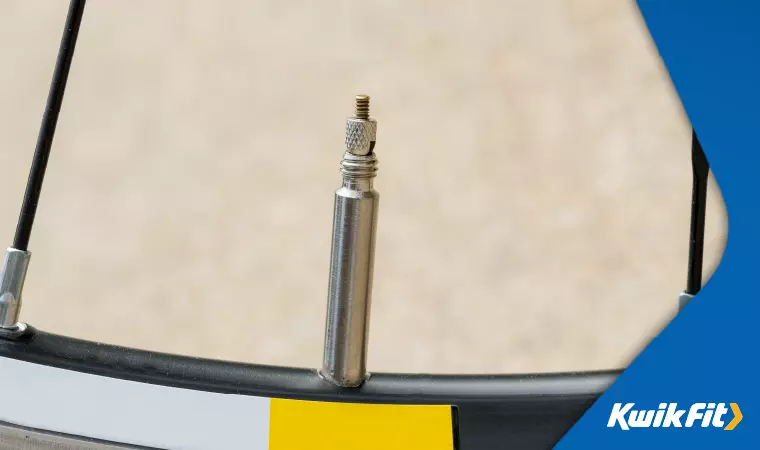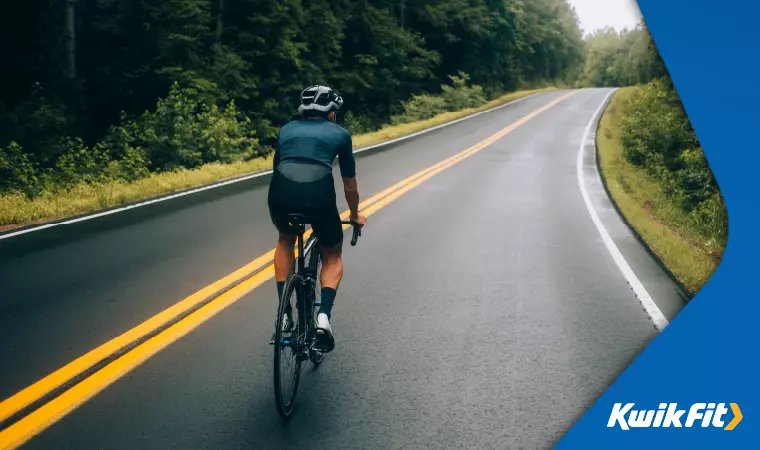How to Pump Up Bicycle Tyres
Jack Dreyer | Tuesday 22nd August 2023 12:00pm

If youíve not gone for a good bike ride in a while, itís quite normal for your bikeís tyres to have deflated over time. Riding on flat tyres, assuming they still have enough air to be usable, makes it much more effort to cycle, reduces handling, and tends to result in a lot of premature wear of the tyre tread.
So how do you get them back up to riding pressure for an effortless ride?
Itís surprisingly easy when you know how Ė but, first, we need to look at the two most common types of tyre valve.
What are Schrader & Presta Valves?

In the west, the most common valves for the last 50 years or so have been either Schrader valves or Presta valves.
Schrader valves are the wider ones youíll usually find on car tyres Ė but theyíre also common on mountain bikes or older road bikes.
Presta valves are much thinner and have a valve lock mechanism. They actually self-seal through the pressure inside the tyre, but the valve lock helps to stop the stem getting pressed in accidentally.
Many Presta valve pumps can have an adapter to allow you to pump Schrader valves Ė and many bicycle pumps are designed with sections to allow you to pump both types of valve. But be sure to find out which you need in case youíre trying to pump your tyres at the side of the road with the wrong pump!
How to pump your bike tyres
1. Remove the dust cap
This exists to help stop dust getting into the valve but also helps to stop the valve leaking as much air. Itís like an extra valve in a way. You donít necessarily even need dust caps, but they also help to stop the valve rusting or corroding.
2. Loosen the valve lock on a Presta valve
With a Presta valve, loosen the valve lock at the top of the stem Ė this lets you press the valve stem in and get air into or out of the tyre.
3. Attach the pump head onto the valve stem
Some pumps and valves need to be screwed onto the stem, some can be simply pressed on and locked with a lever. The pressure-fit ones with levers tend to be more common with modern pumps due to ease of use.
When you press it on, some air will come out and thatís normal. Just make sure that the pump is attached well enough that itís creating a seal and stopping air from continuing to escape.
4. Start pumping
Depending on the type of pump you have, start pumping air into the tyre until itís at the desired pressure. The pressure depends on the type of bike that you have Ė road bikes, for example, will usually need to have much higher-pressure tyres than mountain bikes because they donít need the grip and give that a mountain bike tyre would.
If youíre not sure what pressure to pump the tyre to, check the tyreís sidewall to see what the recommended pressure is.
5. Use your fingers instead of a pressure gauge
If you donít have a pressure gauge, press into the sidewalls of the tyre with your thumb and index finger. At the right pressure on a road bike tyre, you should barely be able to press in.
On a mountain bike, there should be between 5-10mm of give. Of course, this is a lot less accurate than using a pressure gauge but itíll be fine in a pinch!
6. Release the valve locking mechanism
Release the valve locking mechanism for your pump and pull it off quickly and firmly.
You need to be careful here not to bang your knuckles on the bike frame or spokes Ė most bike mechanics start off by skinning their knuckles but you get used to the motion soon enough. If you pull the pump off too slowly then itíll release too much air and you may need to top it up.
7. Re-tighten the Presta valve ring
At this point, your bike is ready to go, but itís always a good idea to re-tighten the Presta valve lock ring and put the dust cap back on Ė then youíre ready to cycle off into the sunset!
Need help with your bike?

Pumping some tyres isnít an expert job, but if your tyres arenít staying inflated and you canít figure out why, take it to a professional. Weíve partnered with leading bike experts, Fettle, to offer bike repair & maintenance services right in our centres.
Any facts, figures and prices shown in our blog articles are correct at time of publication.
Featured Articles
Is it Illegal to Drive With One Headlight?
Saturday 19th July 2025
Wondering if itís illegal to drive with one headlight? Learn about the safety risks and penalties of illegal blown bulbs and why you should fix them promptly.
Air Con in EVs & Hybrids: Experts Answer Your Questions
Monday 30th June 2025
Does air con drain EV batteries? Can you use the air con while charging an electric car? Find out the answers to these questions & more from Kwik Fitís experts.
Why Is Your Car Making a Noise? Fixes & Tips
Friday 13th June 2025
When your car starts making unexpected noises, it can certainly be quite disconcerting; it may be nothing to worry about, but hereís what you need to know.









